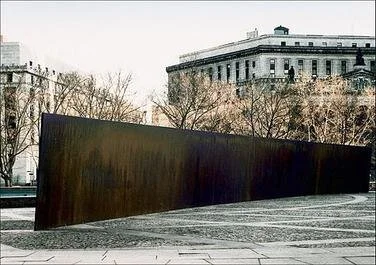The Sustainability Myth: An Interview with Melissa Checker
Interviewed by Katie Uva
Today on the blog, Gotham editor Katie Uva speaks to Melissa Checker about her recent book, The Sustainability Myth: Environmental Gentrification and the Politics of Justice. In it, Checker examines and critiques current frameworks of sustainability in New York, where sustainability and economic development are often seen as goals that are mutually supporting. Checker argues that this belief leads to gentrification, deepens economic inequality, and even winds up worsening environmental conditions in some parts of the city.
Read MoreEveryday Politics are Everywhere in Arab New York: Emily Wills' Ethnography of a Community Under Pressure
Reviewed by Todd Fine
The defeat of Donald Trump promises the imminent end of the “Muslim ban” targeting people from several Arab countries, yet the challenges facing Muslim and Arab communities in the United States will surely continue. In the recent book Arab New York, University of Ottawa political scientist Emily Regan Wills seeks to depict how Arab communities in New York City, whose lives are greatly shaped by external politics, engage in politics themselves.
Read MoreDown the Up Staircase: Three Generations of a Harlem Family
Bruce Haynes Interviewed by Tyesha Maddox
Down the Up Staircase: Three Generations of a Harlem Family tells the story of one Harlem family across three generations, connecting its journey to the historical and social forces that transformed Harlem over the past century. Bruce D. Haynes and Syma Solovitch capture the tides of change that pushed blacks forward through the twentieth century — the Great Migration, the Harlem Renaissance, the early civil rights victories, the Black Power and Black Arts movements--as well as the many forces that ravaged black communities, including Haynes's own. As an authority on race and urban communities, Haynes brings unique sociological insights to the American mobility saga and the tenuous nature of status and success among the black middle class.
Read MoreRainbow LaGuardia: An Interview With Stephen Petrus and Thierry Gourjon-Bieltvedt
Interviewed by Adam Kocurek
Today on the blog, we talk to Stephen Petrus and Thierry Gourjon-Bielvedt about their project Rainbow LaGuardia, a virtual exhibition that examines what it means to be LGBTQ in academia. In it, viewers can explore dozens of video and audio clips taken of twenty-seven LGBTQ faculty and staff at LaGuardia Community College. In these clips, participants talk about everything from their professional lives as LGBTQ academics to their formative experiences in their youth.
Read MoreErich Goode’s Taming of New York’s Washington Square: A Wild Civility
Reviewed By Stephen Petrus
Even during COVID-19, New York’s Washington Square Park maintains its quirky identity. Chances are on a visit you’ll still encounter locals, tourists, buskers, sunbathers, NYU students, dog walkers, chess players, homeless people, petty drug dealers, and maybe even Fartman, Pigeon Man, and the Squirrel Whisperer.
Read MoreWhose City? Fueling the Gentrification Machine through BID Urbanism
By Susanna Schaller
On September 16, 2016 Crains’ New York Business ran an article titled, “Shaping a Neighborhood's Destiny from the Shadows.” The article highlighted the work of business improvement districts (BIDs) in New York City. In the context of federal policies that had systematically drawn the life out of central cities followed by federal retrenchment, urban visionaries and the downtown BIDs they led were framed by bipartisan consensus as savior organizations.
Read MoreThe Toughest Gun Control Law in the Nation: The Unfulfilled Promise of New York’s SAFE Act
Reviewed by Andrew C. McKevitt
When Governor Andrew Cuomo pushed a new gun control law, the Secure Ammunition and Firearms Enforcement (SAFE) Act, through the New York State Assembly in January 2013, just a month after the tragic mass shooting at Sandy Hook Elementary in Newtown, Connecticut, critics said he acted in haste. Cuomo’s administration started drafting a bill before the New Year; it submitted the bill to the Assembly on January 13 and, utilizing a rare emergency measure, the governor signed it an incredible 18 hours later.
Read MoreA Murky Mess of Monuments in Crisis New York
By Todd Fine
Gonzalo Casals, New York City's new commissioner of the Department of Cultural Affairs (DCLA), begins work this week after recovering from the coronavirus. Hired to replace Tom Finkelpearl, who resigned after repeated controversies over an ambitious effort to build at least a dozen new historical monuments, Casals was tasked to bring the initiative to the "finish line” in the remaining twenty months of Mayor Bill de Blasio's second and final term.
Read MoreThe Unexpected Logic of Art Economics: Arts and Inequality in 1980s New York
By Sarah Miller-Davenport
When Richard Serra’s Tilted Arc was installed in Federal Plaza in Lower Manhattan’s Foley Square in 1981, it was meant to be a pioneering work of public art that would expose New York’s masses to post-minimalist sculpture. Tilted Arc would indeed become one of the most legendary sculptures in 20th century history—but not for its artistic merit.
Read More


